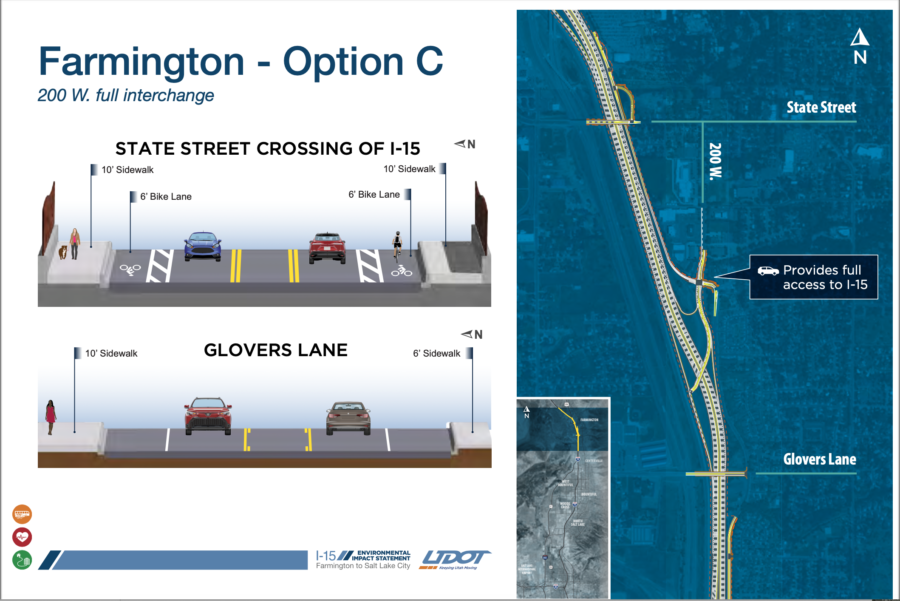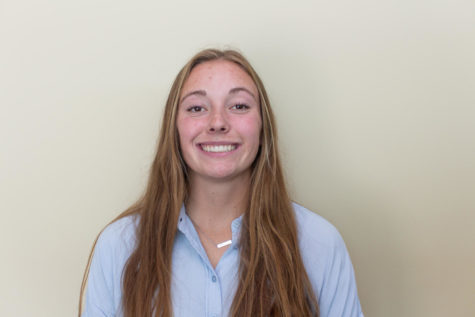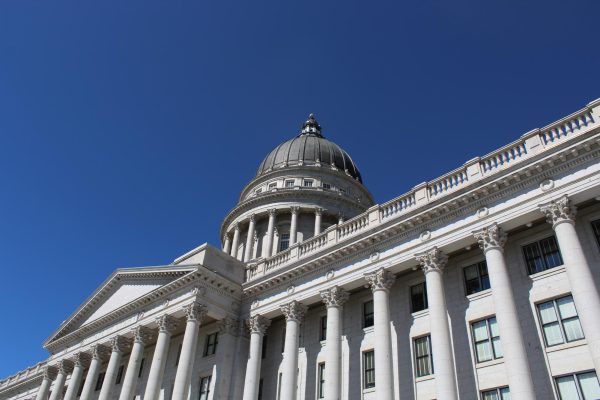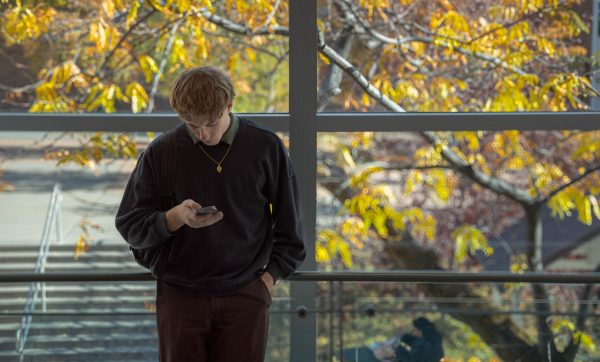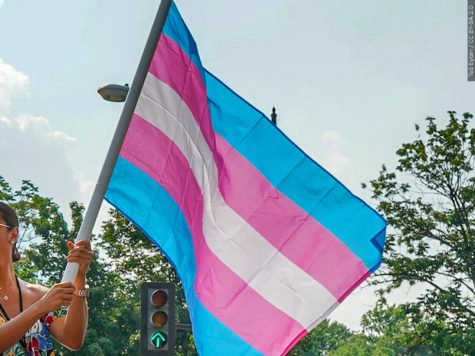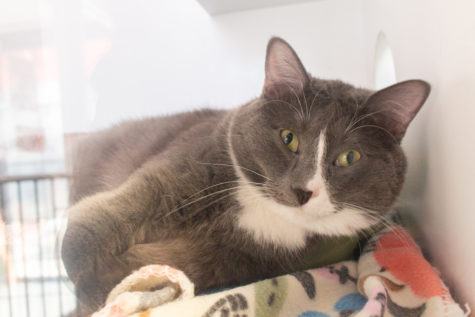Proposed changes for Glovers Lane
Utah’s Department of Transportation is 70% done with one of its biggest projects, the West Davis Corridor. This project extends Legacy Highway from Farmington to West Point.
While all eyes are on the completion and open date for this expansion, many don’t know about UDOT’s next proposal in Farmington, which has community members frustrated and city officials drained.
UDOT has proposed a series of plans to widen I-15 from Salt Lake City to Farmington and improve existing interchanges, as well as add more. One of these new proposed interchanges is at Glovers Lane in Farmington.
This proposed interchange is the only one from Salt Lake City to Brigham City that will redirect freeway traffic into a residential neighborhood.
UDOT has proposed three potential options:
· Option A, which is similar to what is already present on 200 West in Farmington.
· Option B, a single-point urban interchange that looks like an “X” controlled by one light. Residents in the area say this option would destroy many homes.
· Option C, which would improve what is already there, minus a designated Lagoon lane.
UDOT proposed the new interchange as a way to alleviate the Parrish Lane interchange in Centerville. There are plans to improve Parrish Lane, which they planned for the Glovers Lane project to assist in.
Residents are worried that this new interchange would bring dangerous traffic into neighborhoods, and Farmington city officials feel this might be their next battle with UDOT.
Residents left in the dark
Mitch Shaw, senior communications manager at UDOT, said that during the public commenting period in spring of 2022, there were over 900 comments supporting the Glovers Lane interchange.
The residents living in the potentially-affected area were neither asked nor notified of the potential plans.
Shaw said all residents living within a quarter mile of the study area were notified through mail. However, Tammy Hardy, a resident of the area, said she and her neighbors never received mail notifications.
Hardy found out about these plans from the internet in the fall of 2022 after meetings had already happened. Once she did, she saw that her house was one of the many that would be demolished if Option B is chosen.
Hardy later found out that many of those who responded to UDOT’s survey lived in West Farmington or West Kaysville; residents who lived up to 10 miles away from the area who want better access to Farmington High School.
Residents’ Fears
Residents in the area are fighting against the interchange and are worried that Option B will be chosen. If that’s the case, residents say the results would be devastating.
This is the only interchange that sends freeway traffic into a residential area from Salt Lake City to Brigham City.
Shaw said that due to the 900 supportive comments and better access to FHS, Glovers Lane became an option.
Residents have questions
Frustrated, Hardy became the community spokesperson after they put together a meeting for residents living in the area and UDOT. UDOT has asked her to be on a committee of stakeholders as well.
In late November, UDOT held a meeting that went through all the plans with the residents. As it turned out, several of the residents were also engineers.
“I went out and thanked UDOT and they kidded me and said, ‘What did you do? Invite all the engineers?’” Hardy said.
The engineers were frustrated because UDOT couldn’t provide the traffic modeling to justify the interchange or answers to multiple questions.
Shaw said the traffic modeling shows that an interchange there would improve the flow of traffic and the projected influx of vehicles.
UDOT did not respond to requests for the traffic models from The Signpost, and residents and city officials have not seen these numbers either.
According to Hardy, UDOT sent a staffer to the area in December, who was surprised by what the area actually looked like. Hardy said they didn’t know about the local wildlife, the floodplain, wetlands, historical houses or that the children living in that area walked to school and weren’t bussed.
“When they came, the first thing they said to us was, ‘Whoa, this looks a lot different than an aerial,’” Hardy said.
Neighborhood engineers said that with the limited idea of what the area looked like, UDOT didn’t plan out how the local roads and neighborhoods would handle this new traffic. Cam Preston, a civil engineer living in the area, was one of the participants in raising concerns to UDOT.
At the meeting, Preston asked UDOT for the traffic modeling behind the interchange.
“They promised they’d give it to us,” he said. “That was two months ago, and I don’t know where this data is.”
UDOT said it doesn’t know whether any homes will be torn down by the interchange because real estate studies are still being done, but residents note that the maps show roadway on their property. Residents also estimate 25-35 homes may be demolished if UDOT were to go with Option B, which was one of Preston’s biggest concerns.
“When they built West Davis Corridor, I heard early on they only demolished 13 homes, so to build a new freeway from Farmington to West Point and only take out 13 homes — I have to commend you, that’s a good job,” Preston said. “But this Option B is taking out a ton of homes.”
One other concern, according to Preston, is that any of the improvements will bring more traffic to Glovers Lane, and that will require improvements to the intersection at 200 East, about a half-mile from the site.
“Currently, the intersection has limited visibility and with increased traffic and no improvements the number of accidents may increase,” Preston said.
Preston knows this because he’s seen the gridlock on 200 East when an accident occurs on I-15. Drivers trying to get around the congestion take Parrish Lane to 200 East to get to their homes in Centerville, Farmington and Kaysville.
If the interchange were to go in at Glover Lane, drivers trying to avoid congestion would use that to exit the freeway to get to 200 East, which could result in a gridlock. Then, Preston worries that Glovers Lane would also gridlock, and drivers would scatter into the neighborhoods looking for a way through.
“Those neighborhood roads were not built to handle that much traffic,” Preston said.
Preston also thinks that if an interchange is going to end up at Glovers Lane, Option C would be the least destructive. The only issue with Option C is there wouldn’t be a lane dedicated to Lagoon traffic.
Preston proposed to UDOT to build a lane or an overpass that connects into the current dedicated lane to solve this problem.
The homes
If Option B is chosen, it would affect many homes in the area — those that would be demolished, along with the real estate value of homes nearby.
Stephanie Sears, a realtor whose $1.3 million home could end up abutting a freeway interchange, said that homeowners who would lose their homes generally are given “just compensation to fair market value” in the process, which ends up being lower than the open market value.
Sears said that homes in the area generally value for $400,000 to $1.5 million. Those that aren’t getting demolished will lose 10% to 15% in property value.
“For values to not be affected you should be about a good quarter, at least to half a mile from that highway,” Sears said.
Many of these homeowners have lived there for years and paid off their homes. Finding a similar home they can afford in today’s housing market can l be difficult.
“We’re 63 and 64. Do I want to take a 30-year mortgage out so I can move to a new house? No, I want to retire and be missionaries at girls’ camp,” Hardy said.
Farmington’s concerns
The city of Farmington is also concerned about this new interchange, and officials are frustrated at the lack of information they are getting.
Farmington just resolved a lawsuit with UDOT on how the West Davis Corridor will run through Farmington, according to City Manager Brigham Mellor.
Mayor Brett Anderson sees the proposed Glovers Lane interchange as the next legal battle Farmington may have with UDOT.
Farmington is where all the major highways come together. Before the West Davis Corridor, Legacy Highway ended in Farmington and drivers could get on Highway 89, I-15 and Legacy all in Farmington.
“People use the analogy of an insect, we’re that little section of the wasp,” Anderson said. “They’ve got the big body and big tail end, and we’re this little skinny section. We have all these roads that just keep cutting through us, and we’re like, send it to the places that have more area to absorb it. We bore our share now it’s someone else’s turn.”
Anderson said UDOT considers Farmington as just another stakeholder. As a result, city officials are getting just as much information as residents.
“It was almost like they were spoon feeding us a little bit at a time,” Anderson said.
Despite requests, Farmington city officials have also not seen the traffic modeling behind the Glovers Lane interchange.
UDOT has said two of the biggest reasons to build the new interchange is to improve access to Farmington High School and Lagoon.
Anderson said Farmington has already been working on this.
“We are building a whole new road system north of Station Park and north of McDonald’s,” Anderson said. “The new road system put in there will move traffic from the northwest Kaysville and south Kaysville to Farmington, so we don’t need the freeway to be the solution.”
Anderson also said Lagoon is building a new entrance to their park on the north side to split the traffic.
Mellor said he doesn’t want the interchange there because it would take away from the commercial areas in Farmington. Mellor would rather people use Park Lane or have the new interchange put in at Shepherd Lane.
Farmington residents are fighting this interchange and working to find accommodative solutions for everyone. Residents don’t want to lose their homes and have freeway traffic through their streets and Farmington city officials want to keep traffic towards Farmington’s commercial areas.
“Their job is to build roads, and our job is to build communities,” Anderson said.
According to Shaw, a decision on the options will be made this fall. It will be narrowed down to the top two options with another round of public comment and have the final decision made by spring of 2024.


